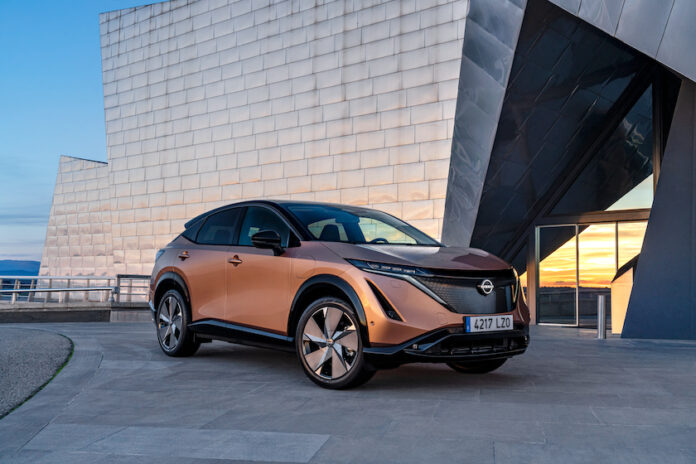22/04/2022 Nissan in just a little over a decade has won a great reputation as an electric car pioneer. The Nissan Leaf is perhaps the best known EV on Irish roads – globally there are over 570,000 with a combined mileage of 9.8b km. This summer the Japanese brand is going to shake things up with its new electric crossover the Ariya. We went to Madrid to test the car to see if the long awaited five-seater is as good as everyone expects it to be.
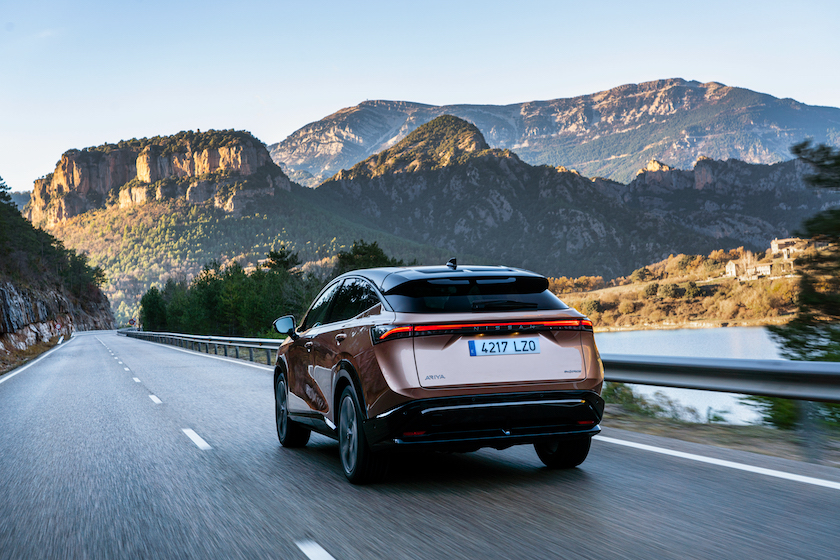
A striking front design gives the Ariya instant road presence. Technical lighting and a gloss grille really help announce the car as cutting edge. The flanks and rear are less interesting – although our test car’s 20 inch alloys filled out its arches well. At the rear the tailgate’s lighting design is very smart in appearance. The tiny rear window is not as restrictive as it looks thanks to our test car’s reversing camera. Overall the Ariya is slightly larger than a Nissan Qashqai in all dimensions with only its boot holding less cargo (446 v 480 litres). A VW ID.4. takes up a similar amount of road space.
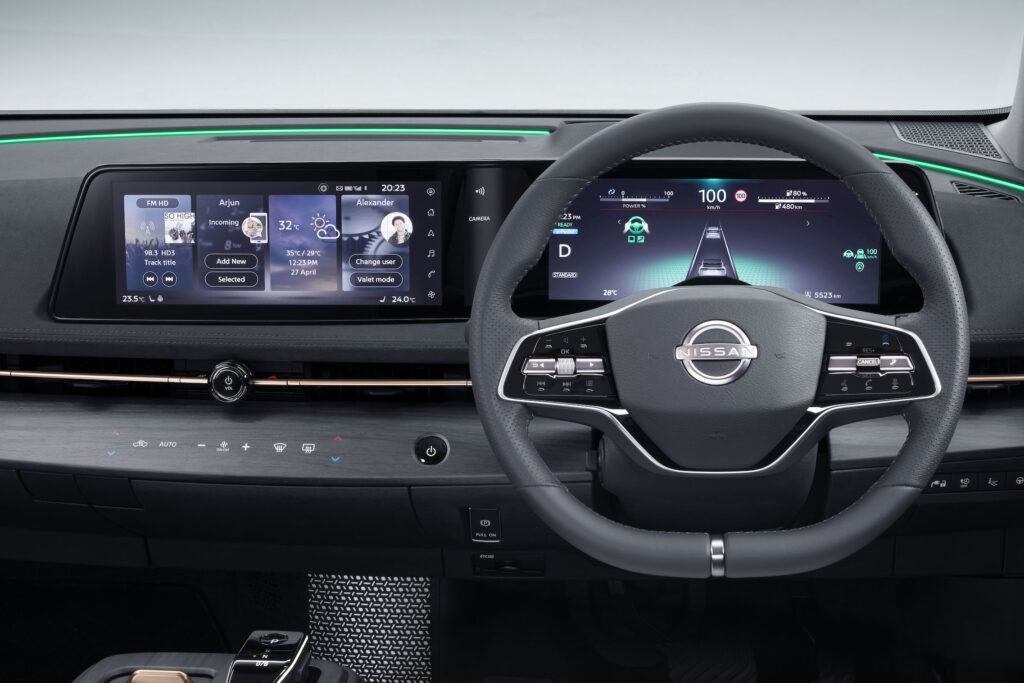
The cabin features big 12.3 inch digital displays – as you’d expect but the dash and switchgear gets the modern flush to surface treatment. Many haptic feedback buttons are mounted just underneath trim and backlit. This reflects the latest in interior cabin design and can only be found in more premium brands right now e.g. the new BMW iX. Nissan’s designers have taken Ariya’s cabin to a level mainstream rivals will have to match in future. The cabin will impress existing Nissan drivers but also help with conquest sales as it really steps up and will lead its class when it lands in ireland mid summer.
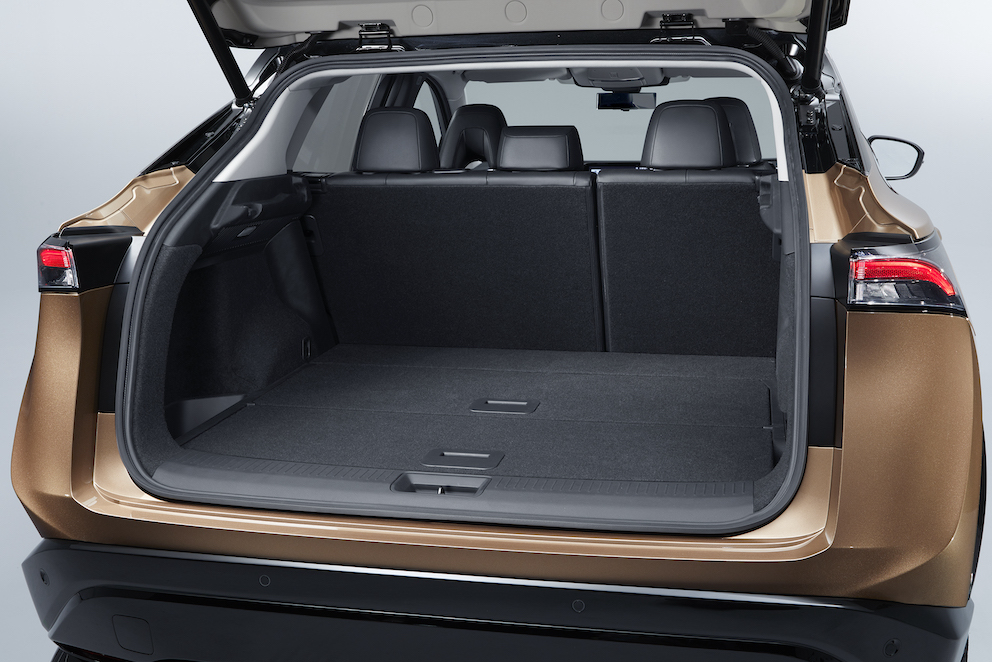
Under the skin there is a shared Nissan Renault alliance modular electric platform. Renault has used it to make the new Megane EV whereas Nissan has super-sized it to make the more substantial looking Ariya. Both firms thankfully will not go head to head for the foreseeable future with near identical models hence the two looking like chalk and cheese side by side. Two battery sizes will be available with Ariya; a 63kWh with a 360km driving range from a full charge and a 87kWh with a 460km range. Front wheel drive is standard. The 87kWh version will be available with ’e-4orce’ all wheel drive. This is a clever system that reduces the vehicle’s potential to pitch when accelerating or decelerating thereby making for a more pleasant drive. We tested the system in a Nissan Leaf mule and when activated it made a noticeable difference.
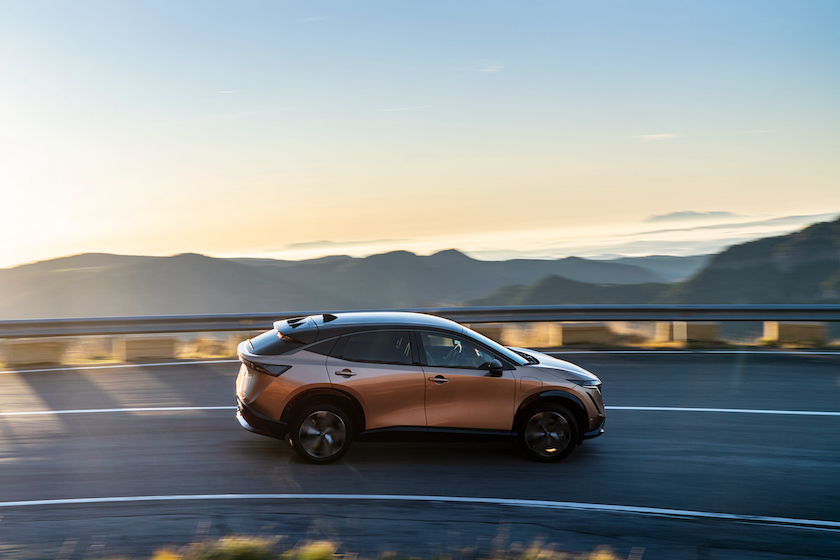
Our test cars were front wheel drive models with the standard battery. Three selectable driving modes allow you be extra economical, comfortable or sporty. The steering is geared for a quick and precise response and the Ariya’s ride quality (albeit on a smooth test track) proved impressive. The car has plenty of power and is as swift as anyone in a family car could want. We did a number of high, medium and low speed manoeuvres repeatedly and the car was always communicative and went where we pointed it and more importantly where we expected it to go. The single motor pushes out 214hp and 300nm. It can do 0-190km in 7.5 seconds. The dual motor AWD version has 239hp and 600nm and can dispatch 0-100km in 5.7 seconds.
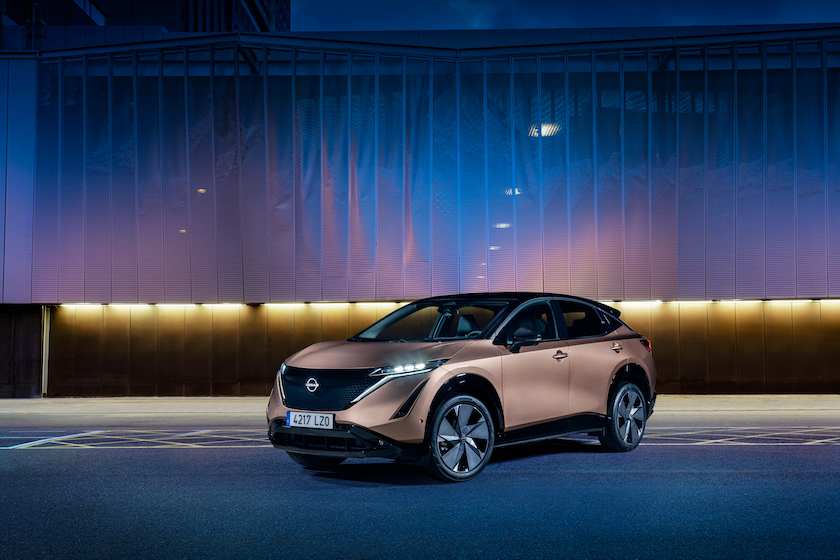
Pricing and specification is yet to be finalised. There will be an option (or perhaps standard feature) of a higher speed 22kW on-board charger (like Megane EV’s) that shortens time spent charging at public slow chargers. The Ariya can rapid charge at up to 130kW and this allows a 10-80% charge in 35 minutes on the standard battery (40 minutes on the larger battery). The Nissan Ariya impressed us with its technology, style and driving dynamics. No doubt it will be a huge hit for Nissan. Michael Sheridan


